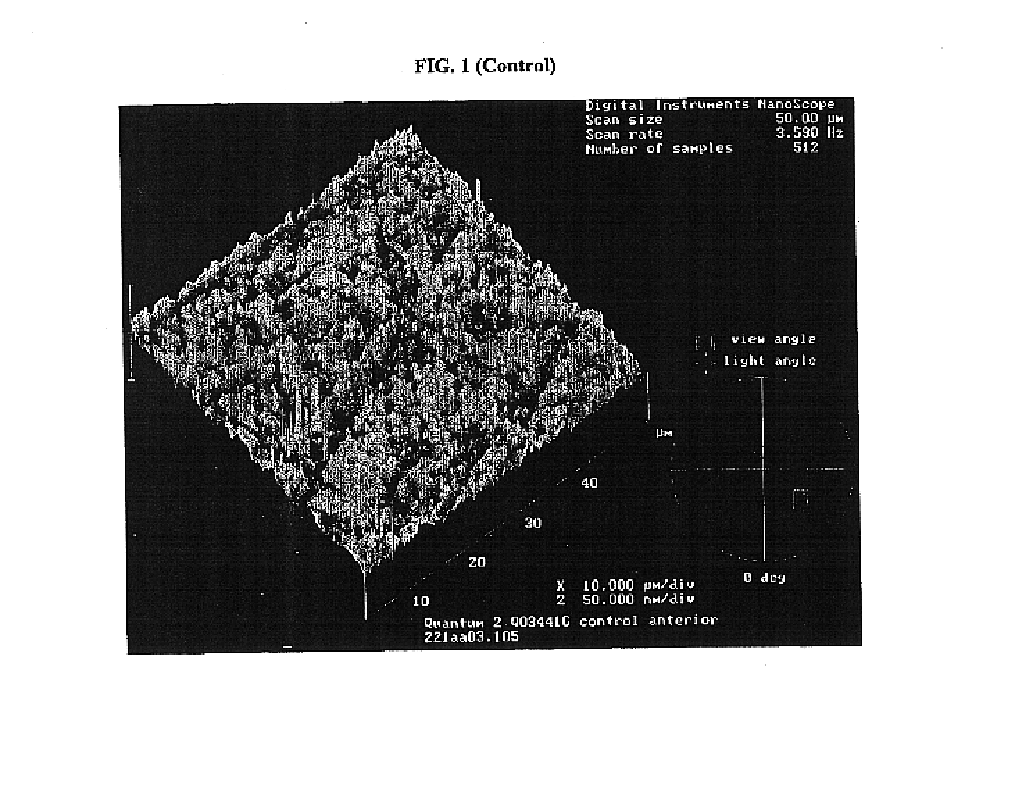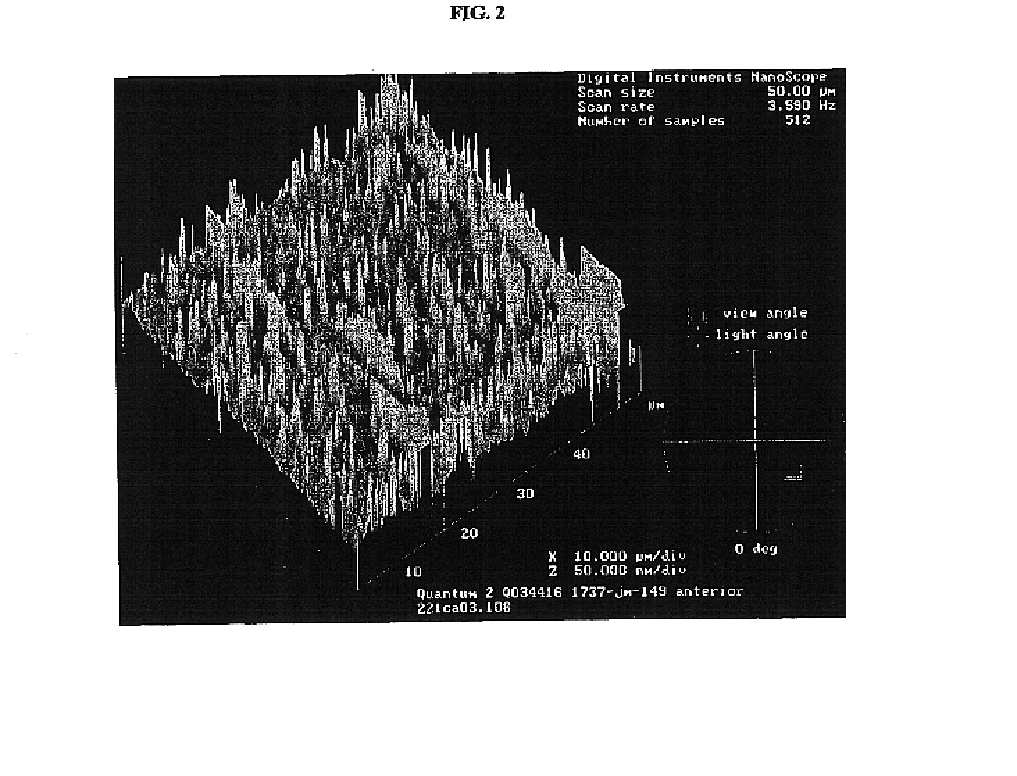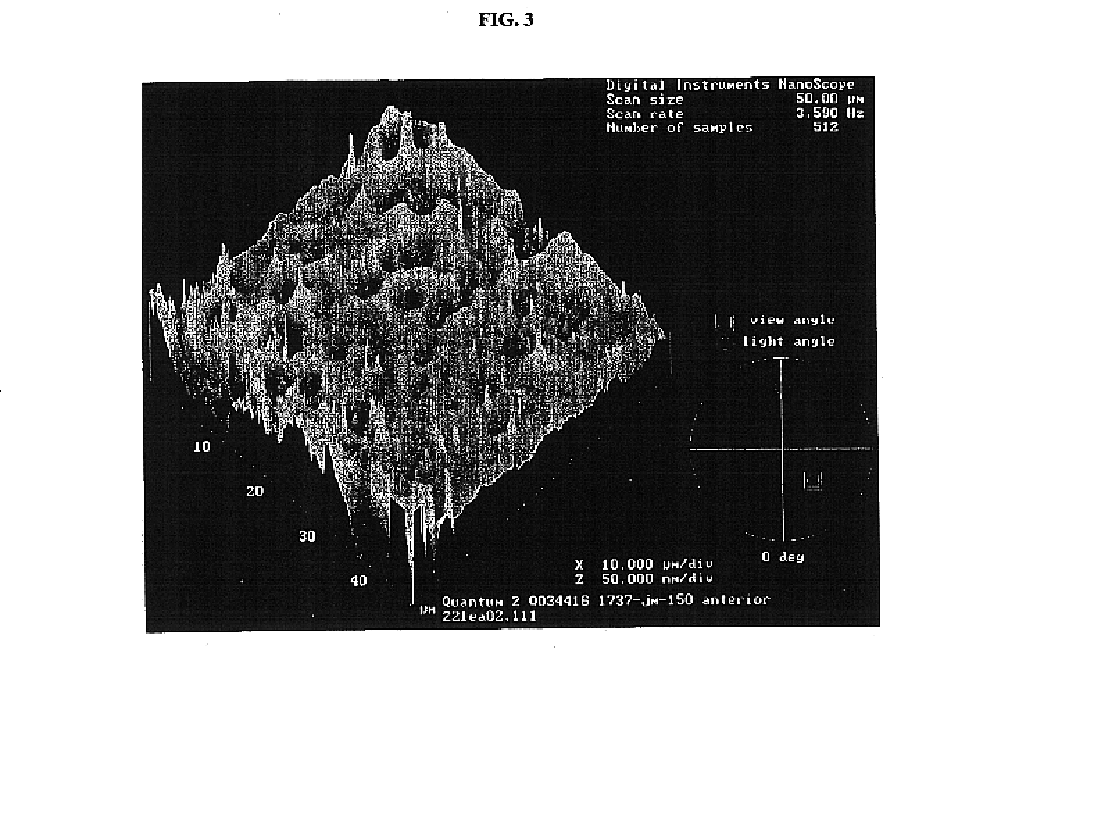Renewable surface treatment of silicone medical devices with reactive hydrophilic polymers
a technology of reactive hydrophilic polymers and silicone medical devices, which is applied in the field of surface treatment of medical devices, can solve the problems of limited polymer chain density, and achieve the effect of increasing hydrophilicity or wettability
- Summary
- Abstract
- Description
- Claims
- Application Information
AI Technical Summary
Benefits of technology
Problems solved by technology
Method used
Image
Examples
example 1
This example discloses a representative silicone hydrogel lens material used as a coating substrate in the following Examples. The formulation for the material is provided in Table 1 below.
TABLE 1ComponentParts by WeightTRIS-VC55NVP30V2D2515VINAL1n-nonanol15Darocur0.2tint agent0.05
The following materials are designated above:
TRIS-VCtris(trimethylsiloxy)silylpropyl vinyl carbamateNVPN-vinyl pyrrolidoneV2D25a silicone-containing vinyl carbonate as previouslydescribed in U.S. Pat. No. 5,534,604.VINALN-vinyloxycarbonyl alanineDarocurDarocur-1173, a UV initiatortint agent1,4-bis[4-(2-methacryloxyethyl)phenylamino]anthraquinone
example 2
This Example illustrates a process for preparation of a contact lens prior to surface modification of a contact lens according to the present invention. Silicone hydrogel lenses made of the formulation of Example 1 above were cast-molded from polypropylene molds. Under an inert nitrogen atmosphere, 45-μl of the formulation was injected onto a clean polypropylene concave mold half and covered with the complementary polypropylene convex mold half. The mold halves were compressed at a pressure of 70 psi and the mixture was cured for about 15 minutes in the presence of UV light (6-11 mW / cm2 as measured by a Spectronic UV meter). The mold was exposed to UV light for about 5 additional minutes. The top mold half was removed, and the lenses were maintained at 60° C. for 3 hours in a forced air oven to remove n-nonanol. Subsequently, the lens edges were ball buffed for 10 seconds at 2300 rpm with a force of 60 g.
example 3
This example illustrates the synthesis of the hydrophilic reactive copolymer involving a 80 / 20 by weight percent ratio of monomers (DMA / VDMO) employing the ingredients in Table 2 below:
TABLE 2ReagentsAmount (g)Amount (m)Dimethylacrylamide (DMA)16g0.1614Vinyl-4,4-dimethyl-2-oxazolin-5-one4g0.0288(VDMO)VAZO-64 initiator0.031g0.1 percentToluene200ml—
All ingredients except VAZO-64 were placed in a 500-ml round-bottom flask equipped with a magnetic stirrer, condenser, argon blanket, and therno-controller. The above was de-aerated with argon for 30 min. After VAZO-64 was added, the solution was heated to 60° C. and maintained for 50 hrs. After the reaction was complete as monitored by FTIR (Fourier Transform Infrared spectroscopy), the solution was slowly added to 2500 ml of diethyl ether to precipitate the polymer. The mixture was stirred 10 min, allowed to settle 10 min, and filtered. The precipitate was dried under vacuum at 30 to 35° C. overnight, and the molecular weight determined t...
PUM
| Property | Measurement | Unit |
|---|---|---|
| hydrophilic | aaaaa | aaaaa |
| biocompatible | aaaaa | aaaaa |
| surface properties | aaaaa | aaaaa |
Abstract
Description
Claims
Application Information
 Login to View More
Login to View More - R&D
- Intellectual Property
- Life Sciences
- Materials
- Tech Scout
- Unparalleled Data Quality
- Higher Quality Content
- 60% Fewer Hallucinations
Browse by: Latest US Patents, China's latest patents, Technical Efficacy Thesaurus, Application Domain, Technology Topic, Popular Technical Reports.
© 2025 PatSnap. All rights reserved.Legal|Privacy policy|Modern Slavery Act Transparency Statement|Sitemap|About US| Contact US: help@patsnap.com



